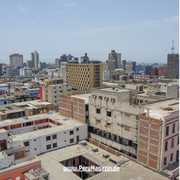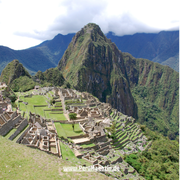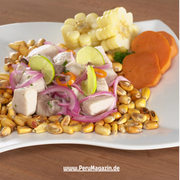
The Peruvian Sol (PEN) is the official currency of the Republic of Peru , a country in South America with a rich cultural history , stunning natural diversity and a diverse economy . This currency plays a crucial role in the country's economic life and has a fascinating history and numerous interesting facts to explore.
History of the Peruvian Sol
Peru 's monetary history is rich and complex. The Peruvian Sol has gone through various incarnations over time before becoming the stable and established currency it is today.
Peru 's first official currency was the Peruvian peso, originally introduced in the 19th century. Later, in 1863, the sol was introduced as an official currency to improve monetary stability. The sol was originally tied to the gold standard until Peru abandoned the gold standard in 1931 under President Augusto B. Leguía and tied the sol to the US dollar from that point on.
Over the years, the Sol has undergone various reforms and changes to reflect the country's economic needs. In 1985, the Sol was revalued again, replacing 1,000 old Soles with a New Sol (Nuevo Sol) to curb hyperinflation and restore confidence in the currency. This reform was an important step in stabilizing the Peruvian economy and laid the foundation for the modern era of Peruvian Sol.
Units and symbols of the Peruvian Sol
The Peruvian Sol is divided into smaller units known as "Céntimos". One sol is equal to 100 centimos. The most common coins are 5, 10, 20 and 50 centimos as well as 1, 2 and 5 soles. There are also banknotes with denominations of 10, 20, 50, 100 and 200 soles.
The currency symbol of the Peruvian Sol is "S/.", which is the abbreviation for "Sol". This abbreviation is commonly used to denote prices and financial transactions in Peru .
The role of the Peruvian Sol in the economy of Peru
The Peruvian Sol is an integral part of the Peruvian economy and plays a crucial role in various aspects of the country's economic life.
1. Foreign Trade: The Sol is used for Peru 's international trade. As an official currency, it facilitates the exchange of goods and services across national borders.
2. Tourism: Peru is a popular destination for tourists from all over the world who want to explore the country's fascinating culture, rich history and breathtaking landscapes. The sol is the main currency used by tourists for shopping, accommodation and other expenses.

3. Domestic Spending: Domestically, the Sol is used for all types of transactions, from everyday purchases to major investments and financial transactions.
4. Currency reserves: The Central Bank of Peru manages the country's foreign exchange reserves, which include the Peruvian Sol. These reserves are important to ensure the stability of the financial system and the country's solvency.
Economic development and stability of the Peruvian Sol
In recent decades, Peru has experienced impressive economic development and stability, which has also affected the strength of the Peruvian Sol. Through a combination of economic reforms, investments in infrastructure and natural resources, and a diversified economy , Peru has created a solid foundation for growth and development.
The Peruvian government and central bank have also taken measures to ensure the stability of the Peruvian sol and protect against external shocks. These include sound monetary policy, foreign exchange interventions and maintaining adequate foreign reserves.
The Peruvian Sol is not just a currency, but a symbol of Peru 's economic development and stability. With a fascinating history, an important role in the country's economy and a solid foundation for the future, the Sol is an essential part of daily life and the shops in Peru . Through continued efforts to reform economics and promote growth, the Peruvian Sol will continue to play a central role in the country's economic life.



